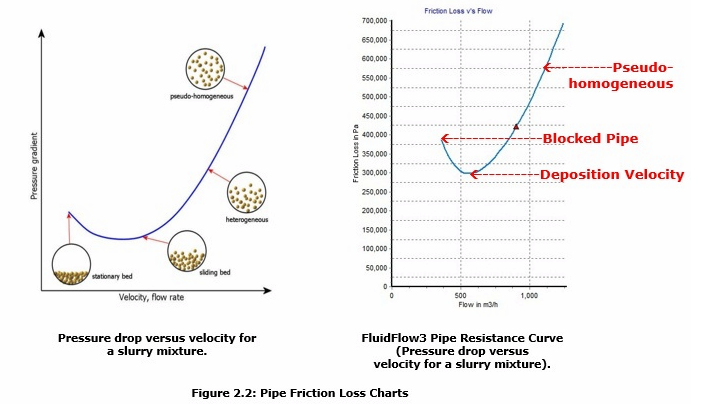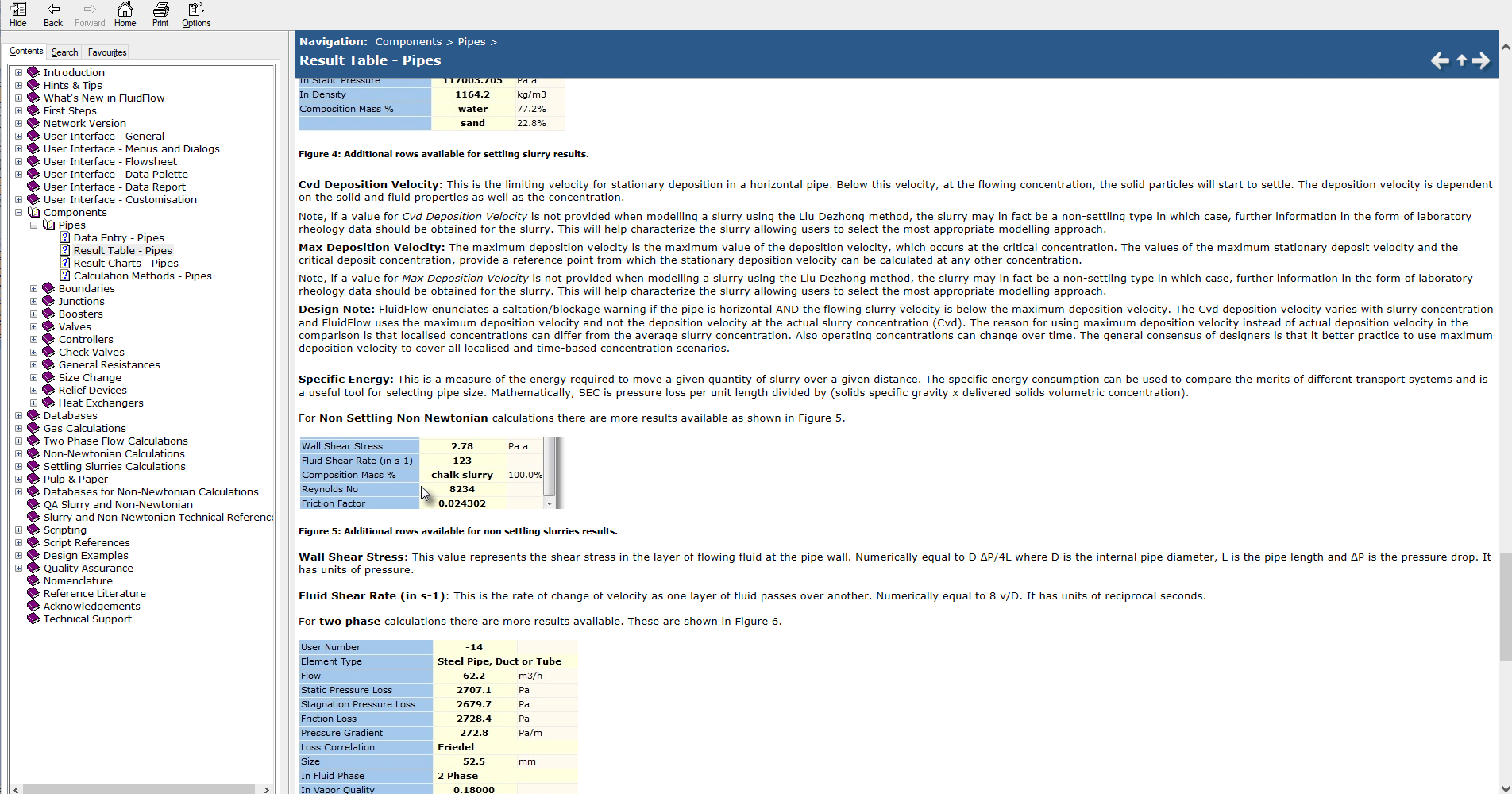The Max Deposition Velocity is the deposition velocity at critical concentration. This provides a reference point from which the stationary deposition velocity can be calculated at any other concentration. The Cvd Deposition Velocity is the deposition velocity at the given concentration defined for the system and will vary depending on the slurry concentration defined for the system. Care must be taken to ensure the actual pipe velocity is higher than the Max Deposition Velocity and Cvd Deposition Velocity, sometimes as much as 30% higher. This is due to the fact that in most cases, it is considered good design practice to design above the Max Deposition Velocity where possible - especially in circumstances where you may not have full control of the concentration of the final slurry. This should ensure the particles in the slurry line will not settle whilst also attempting to reduce the potential for unnecessary wear on the pipes and fittings and increasing resultant energy costs. You can certainly apply engineering judgement and any available system or slurry knowledge and decide if you are satisfied operating at the calculated velocity whilst giving due consideration to the calculated values for Max Deposition Velocity and Cvd Deposition Velocity.
The Chart tab on the Data Palette provides details of the duty-point on the system curve for each pipe which can also be compared and considered. The attached image provides an overview of the typical slurry flow regimes and how the FluidFlow results can be interpreted.

Note, the Help file provides a description of the terms Max Deposition Velocity and Cvd Deposition Velocity as shown in Figure 1 below.
